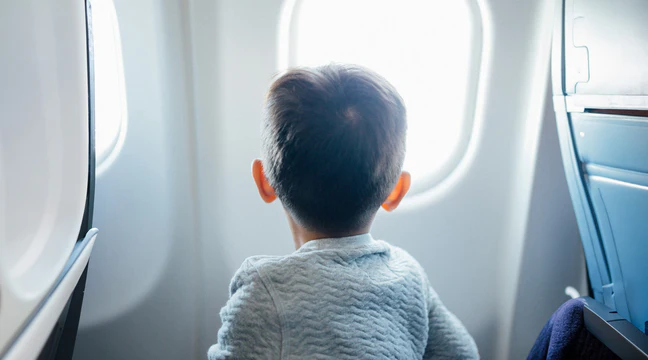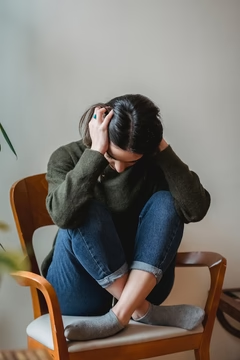Key takeaways
- Autistic children often have sensory sensitivities, and noise is one of the most common sensitivities
- It’s not known exactly what the link between autism and noise sensitivity is, but it’s thought that it’s to do with how our brains are wired
- If your child is sensitive to noise, there are various ways you can help them to cope and become less sensitive
- It may take some trial and error to find the right coping strategies for your child
- Common strategies include creating a safe environment free from noise triggers, using earplugs or headphones to reduce the intensity of noise, and building up their tolerance to specific noises over time
Autistic children are often sensitive to noise. But what’s the link between autism and loud noises? And what can you do if your child doesn’t like loud noises? We’ve pulled together all the information you need to know on sound sensitivity in autistic children – so keep reading to find out more!

What is sensory sensitivity?
Bright lights. Itchy clothing. People talking. Cars backfiring. There is sensory information everywhere, and for many people, it barely even registers (although they’re still subconsciously processing it through their sight, smell, taste, touch and hearing).
But some people, including many autistic children, are sensitive to sensory information. People can either be oversensitive or under-sensitive to sensory information, meaning you either take in too much information or too little information.
Hypersensitivity means that someone might have an extremely strong reaction to a particular sensory stimuli, and hyposensitivity (or under-sensitivity) means that they might need more intense stimuli for it to trigger a response. Most people have a combination of both. They might hate loud noises, but love a particular fabric, for instance.
Sensory sensitivities are related to our five senses of hearing, touch, taste, smell and sight. Everyone will react differently to sensory stimuli, but some common examples in children include:
- Visual sensitivity: Children may have heightened sensitivity to light, color, patterns or movements – or children with hyposensitivity may particularly love bright colors.
- Noise sensitivity: Children who are sensitive to sounds might cover their ears to block out loud noises, while those who are under-sensitive may turn music up really loud.
- Tactile sensitivity: Children who are hypersensitive to touch may have an aversion to particular fabrics or materials, while those with hyposensitivity may seek out certain textures or deliberately brush up against them.
- Sensitivity to smell: Some children might have an increased sensitivity to smells that other people don’t notice, while children who are looking for more stimulation from smells might sniff everything.
- Sensitivity to taste: Some children who are hyposensitive to taste will eat strong-tasting foods, while others may insist on eating the same foods every day. This type of sensitivity often overlaps with a sensitivity to texture, color and smell, meaning that some children dislike foods touching each other on the plate, or will only eat food with a particular texture.
Children with autism may also have issues with their balance, awareness of their body position and movement (known as proprioception) and awareness of their internal body cues and sensations (known as interoception).
Understanding the link between autism and sound sensitivity
Of all of these sensory sensitivities, children being sensitive to sound is one of the most common.
Sensitivity to loud noises can be a sign of autism – but people can be sensitive to loud noises without being autistic, and not all autistic people are sensitive to loud noises.
However, it is thought that 50-70% of autistic people experience a decreased tolerance for sound, and many of those people are children.
It’s not known exactly what the link between autism and noise sensitivity is, but it’s thought that it’s to do with how our brains are wired.
Everyone receives sensory input from the environment around them, whether it’s the sound of birds singing, or the taste of the food we’re eating. Our brain interprets the information it’s receiving from our different senses and tells our body how to react. Depending on how our brains interpret and process this information, we may react differently.
Autistic people often process sensory information differently, which can lead to an increased sensitivity to different sensory stimuli. When it comes to noise sensitivity, that could mean extreme sensitivity to things like certain frequencies, volumes, or specific sounds.
Autistic people might also notice subtle details that allistic (non-autistic) people might not pick up on. This heightened perception can make some sounds particularly intense, and they may even be uncomfortable.
Often, autistic people also have difficult filtering and prioritizing sensory information. If they’re in a busy or particularly noisy environment, like a party or a busy street, there’s a lot of different noises to take in. When the brain doesn’t know which sounds to prioritize – do you listen to the music, or focus on what someone is saying to you, for example – it can lead to anxiety, stress or meltdowns.
Symptoms of sound sensitivity in autistic children
Every child is different, but if your child is sensitive to sounds, you might notice some of the following behaviors:
- Covering their ears to block or reduce the intensity of the sound
- Leaving the room when they hear certain sounds
- Actively avoiding noisy places
- Trying to stop a certain sound
- Having strong reactions to loud noises, such as expressing fear, distress or anxiety
- Trouble concentrating or communicating when in a noisy environment
- Having a meltdown
How to help a child with noise sensitivity
If you suspect your child has autism and is sensitive to loud noises, it’s best to speak to their doctor in the first instance.
There are various things you can do to help your child feel more comfortable in noisy environments. It’s important to understand what their individual triggers and needs are, and work with them to find ways to help them with sound sensitivity. Every child is different, and what works for one child might not work for another. When you work with your child’s doctor, they may recommend specific treatments or therapy, or suggest doing specific things based on your child’s needs.
1. Identify their triggers
The first step is understanding what noises your child is extra sensitive to. Once you know their sound triggers, you can better help them manage which sounds they’re exposed to and give them advance warning that they might hear those noises.
Sometimes, it helps to explain to your child what a particular sound is and why it happens. So, if they dislike the sound of the vacuum cleaner, for example, you can let them know why it makes that noise – which may, in turn, help them to better understand why it’s happening. You can also let them know that you’ll be using the vacuum and how long for, so they can prepare.
2. Create a safe space
Designate an area of your home as a quiet space or safe space, where your child can retreat to if they’re feeling overwhelmed by noise.
It should be a quiet space with few auditory stimuli (so no ticking clocks or humming air conditioning units). It could also have some comforting toys, soft cushions and blankets, and noise-canceling earplugs or headphones, helping them to rest and recharge.
Sometimes, even just knowing that they have a quiet space available is enough to help calm a child down when they’re feeling overwhelmed.
3. Use ear protection
Noise-canceling headphones or earplugs can help to reduce the intensity of sounds, and reduce the severity of a child’s reaction to particular noises.
Headphones completely block out sounds, while earplugs can help to reduce the volume of noises. That means kids can still participate in conversations, while taking the edge of the intensity of other environmental sounds.
It’s important not to overuse ear protection, as it can make children even more sensitive to noise in the long run. However, they’re useful for reducing the intensity of sounds in particularly noisy environments, and can help children to feel more comfortable when there’s lots of background buzz.
4. Desensitization
Over time, you can help your child to get used to the sounds they dislike, to help them become less sensitive to noise. By gradually exposing your child to sounds they’re sensitive to, they can start to build up their tolerance and reduce their sensitivity to specific sounds.
You could, for example, start by playing short sound clips of the sound at a low volume. Then, you can gradually increase the volume and the length of time they listen to the clip until they become less sensitive to it. This process could take weeks or even months and it’s always best to consult with your child’s doctor before starting any desensitization work.
5. Relaxation and breathing
Teach your child some coping strategies for when they feel upset or anxious in a loud environment. Deep breathing can help to reduce kids’ anxiety and feel more in control.
One easy breathing technique you can show your child how to do is to breathe in and out as they trace their way up and down their fingertips:
- Trace a finger up the thumb of the opposite hand and breathe in
- Trace the finger down the thumb and breathe out
- Then trace up the index finger and breathe in
- Trace down the index finger and breathe out
- Repeat for every finger
6. Introduce new places gradually
Lots of noises all at once, especially in new places, can be overwhelming. Gradually introducing your child to a new place can help them get used to the noise over time.
Many shops and supermarkets, for example, offer quiet shopping hours which are designed to reduce sensory overload. You could begin by taking your child to the supermarket during a quiet hour, then slowly building up their exposure by going at slightly busier times.
If an environment feels safe and familiar, your child is more likely to be able to cope with the noises they experience there.
Supporting your child with sound sensitivity
Sound sensitivity is common in autistic children, and can impact their daily lives. However, there are plenty of practical strategies you can use to provide support and help to manage sound sensitivity.
It might take a little trial and error to find solutions that work for your child, but you can just keep trying different things to create a supportive environment tailored to help your child thrive.

Top Tips for Flying with Children: Essential Advice for Stress-Free Travel
Discover expert tips for flying with kids and ensure stress-free travel. Get essential advice for a smooth journey here.

Addressing noise disturbances: tips & laws
Learn how to address noise disturbances with practical tips and understand the laws that protect your peace. Essentia...

What To Look For In Noise Reduction Earplugs
Unlock expert tips for choosing the perfect noise-reduction earplugs! Discover key features to consider when choosing...




